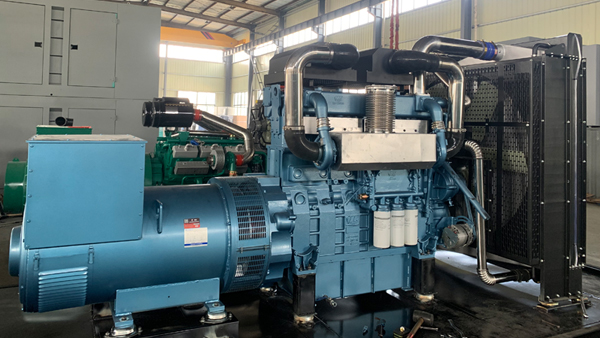Diesel generator noise is the primary noise source, gas engine noise can be divided into aerodynamic noise, incineration noise, mechanical noise, exhaust noise and oscillation noise. Aerodynamic noise mainly includes air oscillation noise caused by intake, exhaust and fan rotation, which is directly transmitted to the air.
The pressure oscillation formed by incineration in the cylinder passes through the cylinder head, and the noise radiated outward from the body is called incineration noise; The impact and oscillation noise of piston on cylinder liner, valve tissue, air injection system and other moving parts are collectively referred to as mechanical noise. During the operation of diesel generator, the exhaust gas rushes out from the exhaust valve at high speed, enters the muffler along the exhaust manifold, and then exhausts into the atmosphere through the liner. Exhaust noise is the big noise of the engine, often about 15 dB(A) higher than the noise of the engine main engine, followed by incineration noise and mechanical noise, fan noise, intake noise.
The main reasons for water intake in the oil pan of diesel generator are: cylinder head, body deformation or crack; Wet liner perforation; The water resistance ring of cylinder liner is damaged; Oil radiator damage; Cylinder gasket damage; Water pump seal ring damage.
1) Cylinder block or cylinder head cracks or deformation: mainly due to improper use and maintenance, such as: long time high load operation, thermal load and thermal stress is too large; A large amount of cold water is suddenly added to the diesel engine under the condition of high temperature and water shortage. Or artificial damage in the process of disassembly and handling; Be damaged and cracked by accidents.
2) Wet cylinder liner perforation: Mainly because the cylinder liner is in direct contact with the cooling water of diesel engine for heat dissipation, the outer surface of the cylinder liner will be scour in the process of cooling water circulation, resulting in cavitation and cavitation phenomena on the outer surface of the cylinder liner. For a long time, cavitation and cavitation will be formed on the outer surface of the cylinder liner. For a long time, there will be dense pits on the outer surface of the cylinder liner facing the water surface, and serious pits will perforate the cylinder liner, leading to cooling water entering the oil pan of the diesel engine.
3) The main reasons for the damage of the water resistance ring of the cylinder liner are: when installing the cylinder liner, the center line of the cylinder liner is not perpendicular to the end face of the cylinder block supporting hole, and the water resistance ring will be chewed out when pressing the cylinder liner. Or because the diesel generator operates under the condition of water shortage, the temperature of the cylinder liner is too high, which damages the water resistance ring and makes the cooling water leak into the oil pan.
Post time: Apr-13-2023

